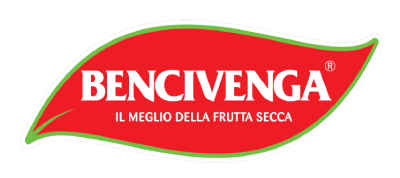Here’s a short quiz:
What chemical compound is in all foods, impacts their safety, controls their quality, determines their optimal packaging, and can be measured with a 5-minute test?
The answer is water! The activity of this ubiquitous and powerful compound can make or break a food product’s safety and quality, and can even help with packaging design. But many manufacturers consider water activity only in terms of food safety.

“These manufacturers are missing a critical piece of how they can understand and improve their product,” says Mary Galloway, the head of food science at METER Food, an Addium company. “Measuring water activity takes 5 minutes and can help you not only better understand your product but improve it.”
Galloway runs METER Food’s client services lab as well as their R&D group, where she runs water activity research projects both internally and in collaboration with external partners. Read on for my conversation with Galloway about what water activity is, how to measure it, and the many ways food manufacturers can use it to optimize their products.
Let’s start at the very beginning. What is water activity?
Mary Galloway: Imagine you have a fresh bag of chips and also a bag of chips that have been open on the counter for a week. Which bag would you want to eat? Most people will choose the unopened bag, because the opened bag is probably stale and gross. The reason that’s true is because of water activity.
There are two ways to measure water in a product. The first is moisture content, which is the amount of water in the product. The second is water activity, which is more related to what that water can do. These two things have a relationship, but they’re not the same, and this can cause confusion.
Water activity is the energy status of water in a system. If there is a lot of energy, then the water can do a lot of things, and in food those things are generally degradative, meaning they cause problems, like microbial growth.
Water activity is measured on a 0 to 1 scale. Absolutely no water and no energy measures 0. Pure water is 1. It represents everything water can do and that includes moisture migration. Water will move from a higher water activity to a lower water activity.
To bring it back to the chip’s example. A perfect, beautiful chip in a closed bag is around 0.2 water activity. Here we get a stable product with nice crispness. The chips in the opened bag will eventually equilibrate with the room humidity. So, if the room humidity is 40% or 50% (0.4 or 0.5 aw), the water activity of the chip will increase to 0.4 or 0.5, and that chip will be stale.
What is the typical humidity for a food manufacturing plant?
MG: It can be quite high. For example, in a bakery, humidity can often reach 60-70%. It varies in different parts of the world and can also be seasonal. Often manufacturing plants see lower humidity in the winter and higher in the summer. We get a lot of questions from companies that produce year-round, and they’ll be fine in winter but then start having all types of different issues in the summer. And a lot of times, those issues are influenced by water activity and moisture migration.
Aside from keeping chips fresh, why is water activity an important concept for food manufacturers to understand?
MG: Many manufacturers know that water activity plays a role in food safety and that it’s included in many government regulations. Food with water activity above 0.85 can grow potentially hazardous microbes. The FDA uses the known water activity limits for these various microbes to set specific limits for different types of food.
Essentially, for every microbe, whether it’s E. coli, Salmonella, or C. botulinum, even if you have the perfect conditions for growth (i.e., perfect temperature, perfect pH, perfect nutrient composition), there’s a minimum water activity level at which that microbe will stop growing. So, if you can drop the water activity below that level, that microbe cannot grow. This is great for food safety because you don’t have to do challenge testing for every potentially harmful microbe. Instead, you can lower the water activity below 0.85, and that will satisfy food safety regulations.
There’s also a mold limit, which is 0.7. Molds might not be dangerous, but they certainly aren’t appetizing, so most manufacturers want to produce products with water activity below this level. An added benefit is that if your products can’t grow mold, you can reduce your need for preservatives, which is very attractive to manufacturers and consumers who are looking for clean products.
But the biggest application for water activity is the overall stability of the product. Water activity is related to degradative processes like enzymatic changes, browning, and lipid oxidation. It can cause texture changes, like caking and clumping in powders. Overall, knowing your water activity helps you better understand your product and its functional limits in the manufacturing sense.
What’s an example of how you can use water activity to improve food quality?
MG: Moisture moves from a higher energy state to a lower energy state, not with differing amounts of water. So, if you have two ingredients with different moisture contents, but the same water activity, the moisture doesn’t move. But, if there’s a differential in water activity, the water will move and that can affect quality.
Think about Raisin Bran cereal. You have a crispy flake and a soft raisin – two ingredients with very different moisture contents. If you just put these into a package, you’d end up with a soggy flake and a break-your-tooth raisin. That’s the reason for the sugar on the outside of the raisin. Sugar is a good binder of water, and binding water is one way of lowering its activity. The water is still there, but the energy is reduced. Basically, the cereal is manufactured so that the two very different ingredients have the same water activity. As a result, there’s no moisture moving between them, so the flake stays crispy and the raisin soft.
Water activity can also help manufacturers optimize their packaging and even contribute to sustainability. Can you talk a little about that?
MG: Going back again to the original example, what keeps the potato chips in the bag fresh is good packaging. There’s a vapor barrier that prevents the water in the ambient environment from getting into the product.
If you know the critical water activity for your product, like the 0.2 for the chips, you can determine the optimal packaging for a desired shelf life. Say we want chips to last for a year, we can calculate exactly what’s required in terms of the water vapor transmission rate (WVTR) of the packaging.
One common mistake we see is manufacturers that make one product, call it Product A, and now they want to make a new product, Product B. They assume they can use the same packaging for both, but that’s usually not true. Sometimes they need more packaging and sometimes they can do with less. Understanding your water activity helps you make data-driven decisions.
We also find that many companies have been making the same products forever, using the same packaging, but they don’t actually know what their true packaging needs are. This is critical information if they are trying to move to a more sustainable package. A lot of manufacturers are actually overpackaging, so getting it right can help them also increase their sustainability.
How do you measure water activity, and how long does it take?
MG: The easiest, fastest, and best way is to use a water activity meter. There are many options for this, depending on the sensor used. Some meters use a direct method to measure water activity, like a dew-point chilled mirror sensor or laser. Others use a secondary method, a resistive electrolytic solution or a capacitance sensor. Which sensor you choose will greatly affect how long it takes to make a water activity reading. The direct methods take about 5 minutes. The secondary methods can take 15, 30, or sometimes even 60 minutes because they have to go through multiple equilibrations before getting a water activity reading.
Something else to keep in mind when picking a sensor is how they handle reading any products that have flavorings or vapors. Substances like volatile compounds and alcohols can affect water activity readings. The direct methods handle them best, but a dew-point chilled mirror can give a slightly higher water activity reading than what is true. And the secondary methods can be permanently ruined by alcohol. Only a meter using a laser will not be affected in any way by volatile compounds.
Are there specific types of foods, or steps in a process, for which understanding water activity is particularly crucial?
MG: There are many different applications for water activity testing. Measuring incoming ingredients is a big one, especially for manufacturers that make the same product in different seasons. Powders pick up moisture very easily, and then if you blend them into a product like a soup mix or a spice blend, you can get caking or clumping in your line, which causes a lot of trouble. To avoid gumming up the works, some manufacturers have a maximum water activity that they’ll allow, and they’ll either pass these requirements to the supplier or put the ingredients through a drying process before introducing them into the line.
Formulation is another key step because when you blend ingredients together their water activity will equilibrate. If you understand what will happen when those raw ingredients combine, you can use water activity to make your product more stable.
QA uses it for food safety compliance but also to ensure consistency of the final product. We recommend taking water activity readings at the end of each batch to make sure you’re producing the same product every time, and then again when you’re packaging it for final release. You should also take into account the temperature and humidity conditions once the product leaves the factory. You may be able to tweak the product or the packaging to improve stability.
Do you have a favorite case study about how METER Food has used water activity to help a customer improve their product?
MG: We worked with one company, Edesia, that makes peanut paste for humanitarian aid. The water activity in the product was quite low, so they were concerned about rancidity creating an off flavor or odor. They were experiencing the seasonality problem in reverse – rather than the humidity getting too high in the summer, it was getting too low in the winter. We did a lot of testing with them to help them understand their water activity and raise it a little to make the product more stable.
It sounds like water activity can have several big implications for an organization. Thank you, Mary!
MG: It can! And thank you!
 Pages you might like
Pages you might like








 Latest information
Latest information
 Follow official account
Follow official account
 Online support
Online support
 鄂ICP备2022017323号
鄂ICP备2022017323号
 鄂公网安备 42018502006493
鄂公网安备 42018502006493
 Launch Exhibition
Launch Exhibition
 Release information
Release information



 Today's topic
Today's topic
















